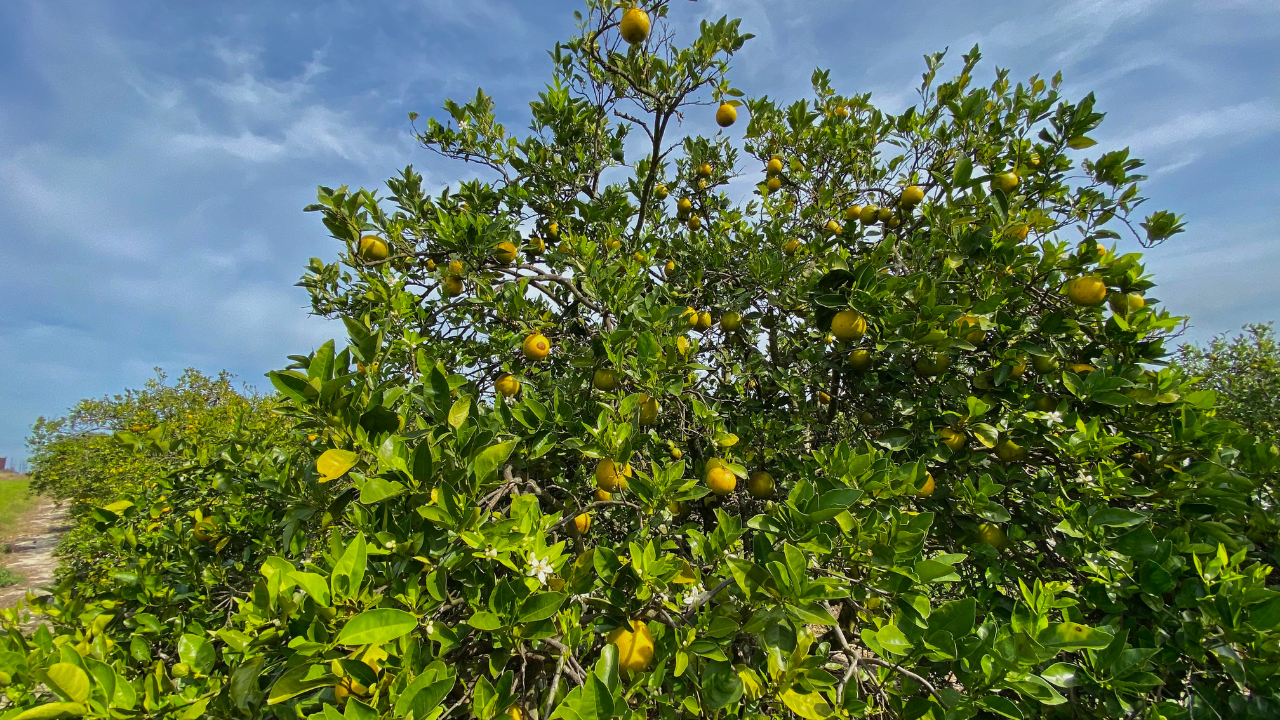BARTOW, Fla. — Walking through one of the many orange groves that line 80 Foot Road in Alturas in Polk County, a person with an untrained eye would never know it.
Growers are battling an almost invisible enemy, and virtually every tree has been impacted.
Huanglongbing — more commonly called HLB or citrus greening — slowly suffocates trees and both shrinks their yields and reduces the quality of their fruits.

According to Michael Sparks, the CEO of Florida Citrus Mutual, the disease likely entered the Port of Miami about 15 years ago and has since spread to groves in every citrus-producing county in the state. It’s a disease with no surefire cure.
“It spreads by a little bug the size of a mosquito,” Sparks explained.
Sparks’ trade group represents thousands of citrus growers, many of whom have spent precious hours and dollars attempting to mitigate citrus greening.
“We are at a crossroads,” Sparks said bluntly. “This is the most challenging time for the Florida citrus growers.”
Underscoring Sparks’ assessment, back in October, the U.S. Department of Agriculture forecast that Florida citrus growers would produce 11% fewer boxes of oranges this season (47 million boxes).
Now, in a January 12 forecast, that estimation was downgraded to a 16% reduction in harvested boxes (44.5 million boxes). Sparks says, if true, a harvest of that limited size would rival those of the 1940s before Florida’s citrus industry was as large as it is today.
“There’s no words that really come to mind,” Sparks said. “It all but tears your heart out.”
He fears it could set off a chain reaction.
Since 95% of Florida oranges are used to produce about half of the orange juice Americans drink, Sparks says consumers can expect to pay more. Additionally, communities propped up by the citrus industry could also feel a painful squeeze as the industry loses both farmers and acreage.

“Unfortunately, Florida Citrus Mutual — that was built on small growers — we have lost many growers. We have lost huge acreage in the State of Florida,” said Sparks. “We have counties in the State of Florida that are really funded — significantly — by the efforts of Florida citrus.”
However, for all the despair, there is still hope for Sparks.
He’s encouraged by the support from both federal and state officials, the research that’s currently underway to cure the disease, and the resilience of the people who’ve grown the iconic crop for generations.
“We’re down, but we’re not out,” Sparks said confidently.
Click here to learn more about how the University of Florida Citrus Research and Education Center in Polk County is researching a potential solution.





